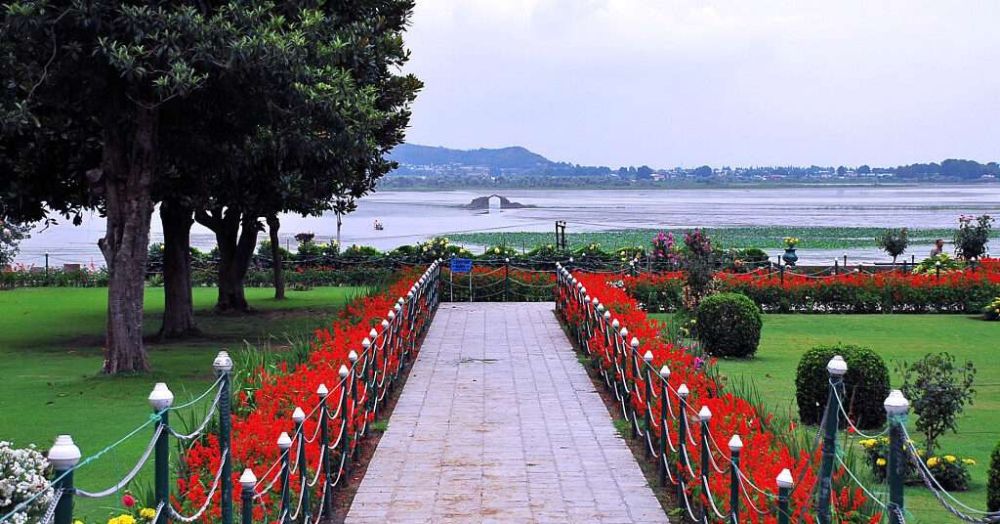

Nishat Bagh, often referred to as the "Garden of Bliss," is one of the most splendid Mughal gardens located on the eastern side of the Dal Lake, in Srinagar, Kashmir, India. With the Zabarwan Mountains as its backdrop, this garden exemplifies the peak of Mughal horticultural excellence. The garden was designed and built in 1633 by Asif Khan, brother-in-law of the Mughal Emperor Shah Jahan.
The architecture of Nishat Bagh reflects the Persian style of landscaping, with its well-manicured terraces, a central water channel, and a diverse variety of flowers and trees. The layout of the garden is based on the Persian concept of paradise gardens and is a representation of the Islamic idea of heaven. Its twelve terraces are said to represent the twelve zodiac signs, subtly integrating an astronomical concept within the garden's design.
Throughout history, Nishat Bagh has been a popular attraction for both local rulers and global travelers. During the British colonial period, the garden was maintained and visited by British officials, as well as Indian royalty. Post-independence, Nishat Bagh became a public garden and remains one of the most picturesque tourist attractions in Srinagar.
With the rise of tourism in Kashmir in the 20th century, Nishat Bagh turned into a must-visit location for travelers from around the world. Its history, coupled with the natural beauty of Srinagar and the Dal Lake, attracts thousands of visitors annually. It has endured various phases of ups and downs due to the political situation in the region, yet it has managed to maintain its allure and historical importance.
In recent years, ecotourism and sustainable tourism practices have become the focus, with an emphasis on preserving the natural environment around the gardens. Tourism authorities have been working on initiatives to maintain the historic charm of Nishat Bagh while ensuring that visitor influx does not harm the ecosystem.
The garden's historic significance and natural beauty also make it a popular backdrop for photography and cinema. Bollywood movies often feature scenes shot in the Mughal gardens, including Nishat Bagh, thereby enhancing its appeal to domestic tourists. Moreover, there's a growing interest in cultural tourism, where visitors are keen to learn about the history and the Mughal architecture of the place, which includes engaging with local guides for in-depth tours of the garden's features.
Apart from these trends, Nishat Bagh has seen a surge in local tourism, as the people of India recognize the value of their domestic heritage sites. It continues to be a popular destination for family picnics, photo shoots, and a place of relaxation amidst nature and history.